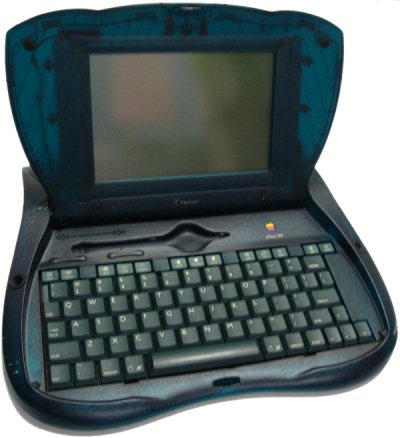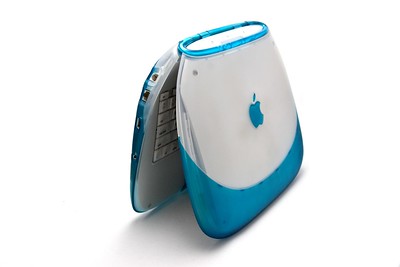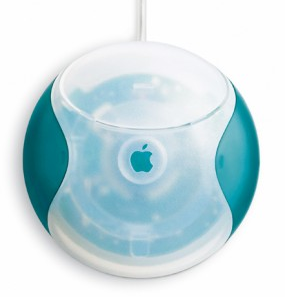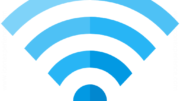The other day I read an article called Some Computers and Cellphones from the ’90s. At this point it’s just fun to point and laugh at the technology, but I think this article didn’t go far enough. It didn’t really feature some of the ugliest computers of the day. The two worst, I have to say, are both Apple products.
Apple eMate

Right there I would say is the flat out ugliest laptop ever created. This is the Apple eMate, first released in 1997. It’s hard to see but the plastic was a little translucent, so it kind of had that same jelly look a lot of Apple products had back then.
There was no excuse for this device back then. It wasn’t a proper laptop, instead running a version of Apple’s Newton OS for handhelds. It was intended to introduce the laptop experience to school-age kids. I have to imagine that some kids tried an eMate and were scarred forever.
Apple iBook G3 “Clamshell”

In the late 1990s, Apple tried to inject some visual interest into its devices, which previously looked like beige boxes. They added translucency, colors, and rounded shapes. People noticed when you had one, for sure, but this didn’t work out as well as anyone hoped.

The iBook had a large handle which let you carry it like a purse or briefcase. However that, combined with the shape and white color, led many to say that it looked like a toilet seat. Never a good comparison for a product.
The iBook was a very serviceable laptop for the day, but the design held it back. All those rounded corners meant a lot of wasted space. Apple had a flirtation with bright white keyboards in the 1990s and 2000s. They looked good when you bought them, but they got grimy and disgusting pretty quickly.
Another ugly decision: the hockey puck mouse

This is the mouse that shipped with the iBook and other Macs back in the late 1990s. It was called the “USB Mouse” and from a design point of view, it looked great with the iBook and original iMac. Unfortunately it was a mess from a usability point of view. It was too small for all but the smallest hands, and it was impossible to tell which direction it was pointing in. More than any other Apple product ever, the USB mouse spurred massive growth in the third-party accessories market as Mac users sought to actually use the devices they’d paid so much for.
Why were ’90s computers so ugly?
The 1990s aesthetic wasn’t objectively ugly, although it’s hard to agree with that statement when you look at this:

This was an actual phone that Motorola sold as a special edition. It took everything sleek and cool of the most popular phone of the day and ran it through some sort of filter to make it look as goofy as possible.
The 1990s were a time where people felt like in order to be accessible, something had to feel good in your hands. 1980s electronics were all about hard edges and chrome. In order to feel good in the real world, you need soft edges and curves. [I’ll just leave that statement right there.]
Another theme of 1990s technology was that it was expensive, but had to work in the real world. This led to a lot of plastic cladding and shockproofing so that you could actually feel like you wouldn’t break the thing the first time you dropped it.
I hate to pick on Apple again but here goes. This was their massively popular Powerbook 100:

It looks like you could use the thing with big gloves on. Every button is oversized and every connection point is emphasized. Sleek wasn’t part of the equation here.
Have we gone too far?
Today’s electronics are sleek again, super thin and super sharp. But they break easily. We accept this as a fact of life, or we cover them with cases. But that’s the 2010s-early 2020s aesthetic. The device should disappear behind the content, said Steve Jobs, and today’s devices to. They also bend and break if you actually use them in the real world, but at least they aren’t so expensive to replace.





